This is another easy recipe of the Korean Natural Farming formulas. Use vibrant “good” plant stock, i.e. herbal plants that supply good health benefits, or plants that thrive with vigorous plant tops. Some examples are comfrey, purslane (portulaca), watercress, sweet potato leaves, emerging mango leaves (unless allergic to mango), moringa, parsley, etc. Plants that grow in your region work best for your garden.
Pal Cleta came for a visit and saw a weed in my lawn and pointed out that it was a Hawaiian herb called uhaloa that was very good for respiratory problems – and the remedy was to pick 9 leaves and steep as a tea. Who would know that? And another friend had pointed out another weed that is called pakai, a prickly amaranth that is good for stomach disorders, cholesterol, inflammation, skin disorders. These and so many other plants are great candidates for FPJ. I now have a new appreciation for the my weeds.
Drake of KNFsupport.org considers these FPJ formulas as food/medicine not just for plants, but also for humans. He will dilute some in water and drink it. The beauty of KNF is that all these formulas are not just good for plants and soil – they are also good for us.
How to make FPJ
Wake up early – just before the sun rises – and clip the tips of the vigorous growing plant. Do not wash off dirt if present. Only gather one type of plant, i.e. purslane only. Layer in a jar with a wide mouth so you can add brown sugar to cover. Massage the plant material and brown sugar until the leaves begin to wilt. Pack tightly, cover with a permeable lid (paper towel and rubber band), and keep in cool dark place for a few days.
After awhile, the leaves and stems float to the top and a syrupy liquid forms on the bottom. Remove the plant material and strain the liquid into a clean bottle. Do not squeeze the leftover plant material to extract every bit possible. Discard the leaves and stems. Label, seal bottle with a permeable lid, and store in a cool dark place for up to a year.
How to use FPJ
Unlike LAB, this is not used as a stand alone product for plants or soil, but it is part of solutions such as Seed Soak or Plant Maintenance solutions. However, the College of Tropical Agriculture at the University of Hawaii has an info sheet on it, and they use it in a 1:500 or 1:800 dilution (1 or 1 1/2 tsp per gallon of water) as a soil drench or spray. It is best to use each plant’s “juice” on itself, i.e. tomato FPJ on tomato plants. Various different FPJs can be combined while diluting. Have fun making this and watching your plants thrive!
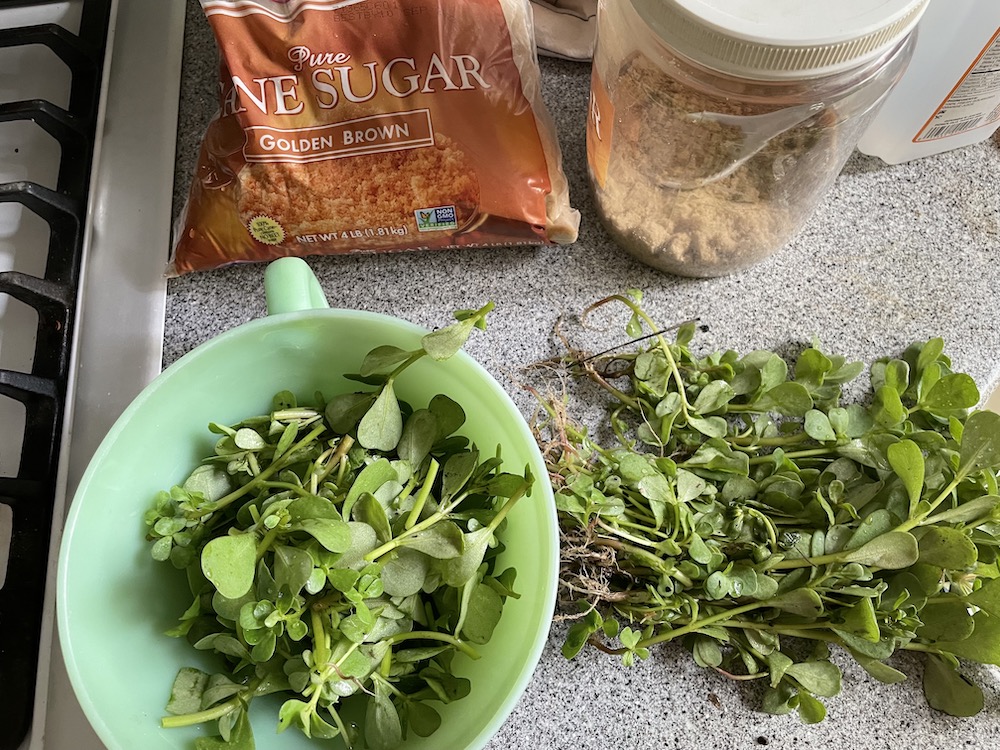
fresh greens, brown sugar 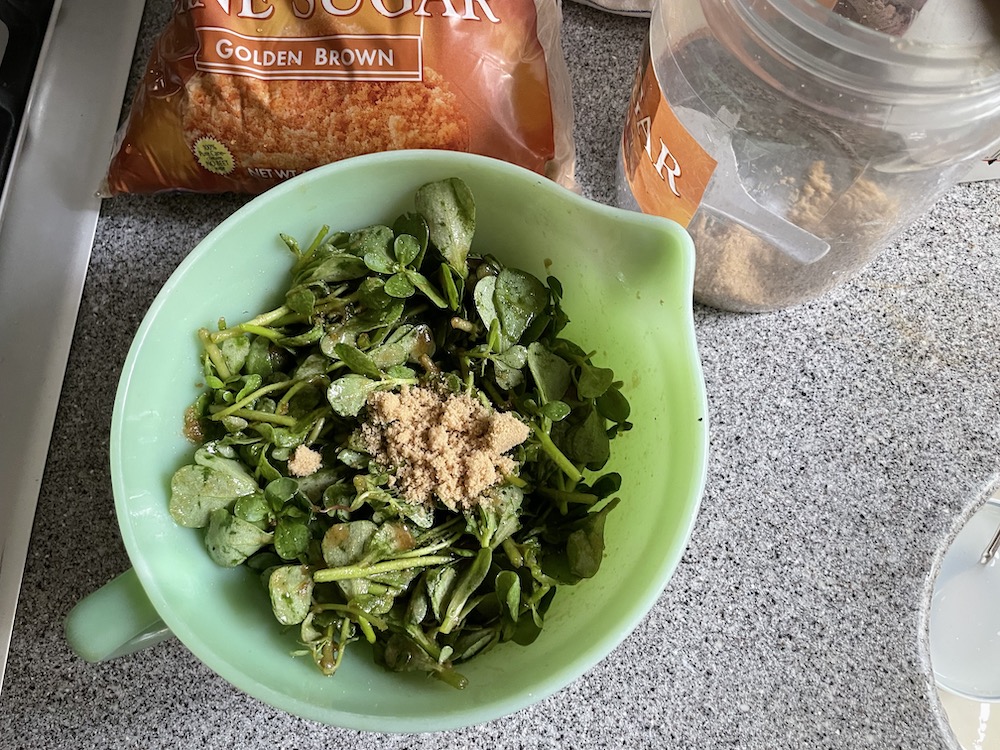
after chopping, add sugar and massage 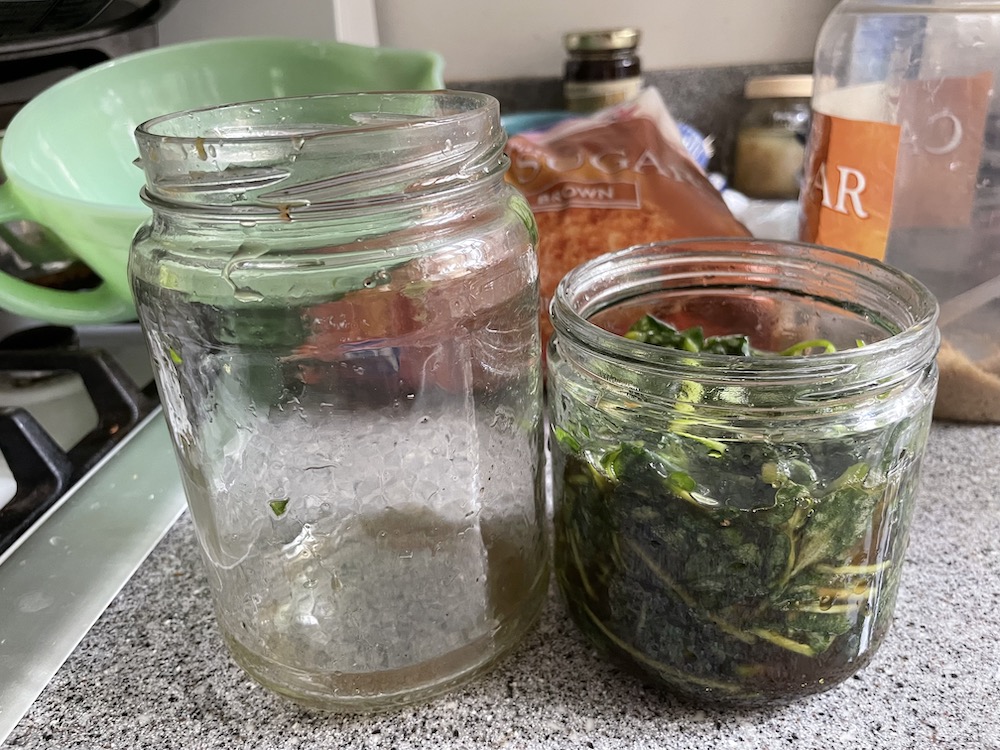
put wilted greens in a jar 
cover jar with paper towel and secure. make sure to identify plant 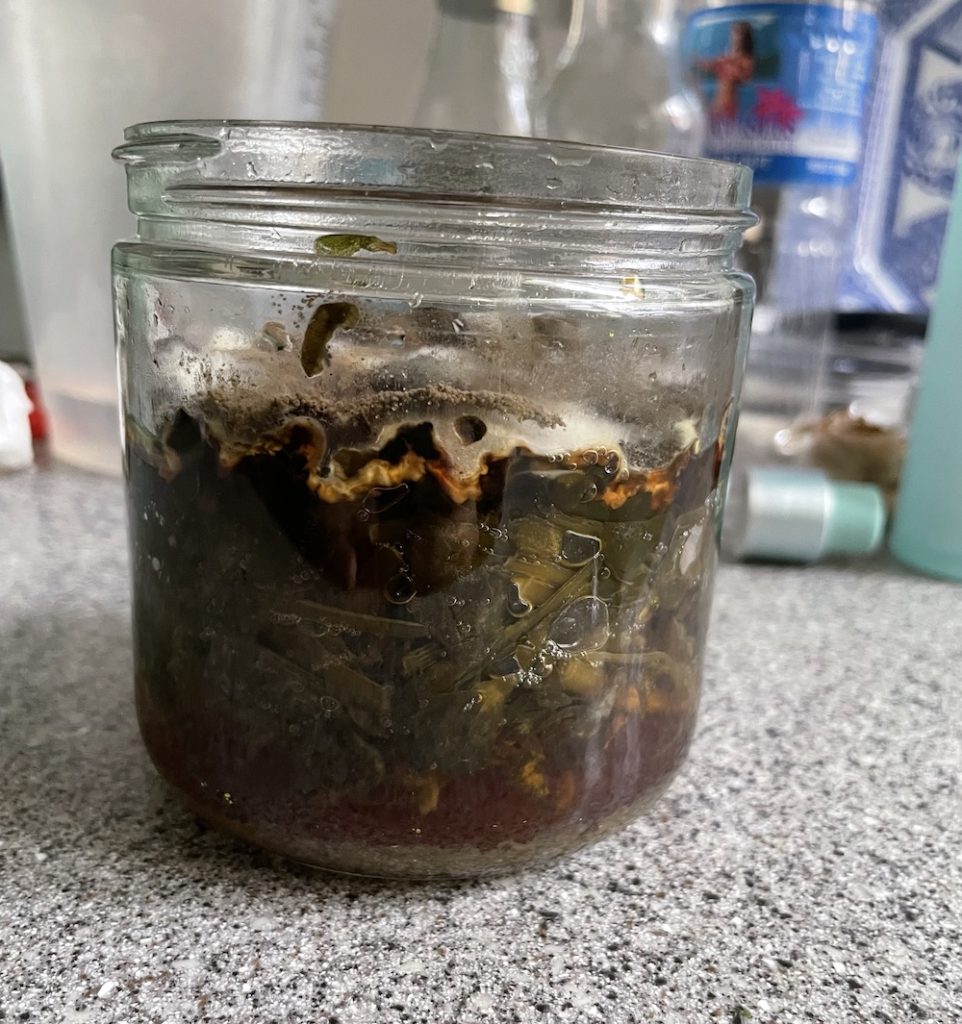
after 10 days (a little long but okay) 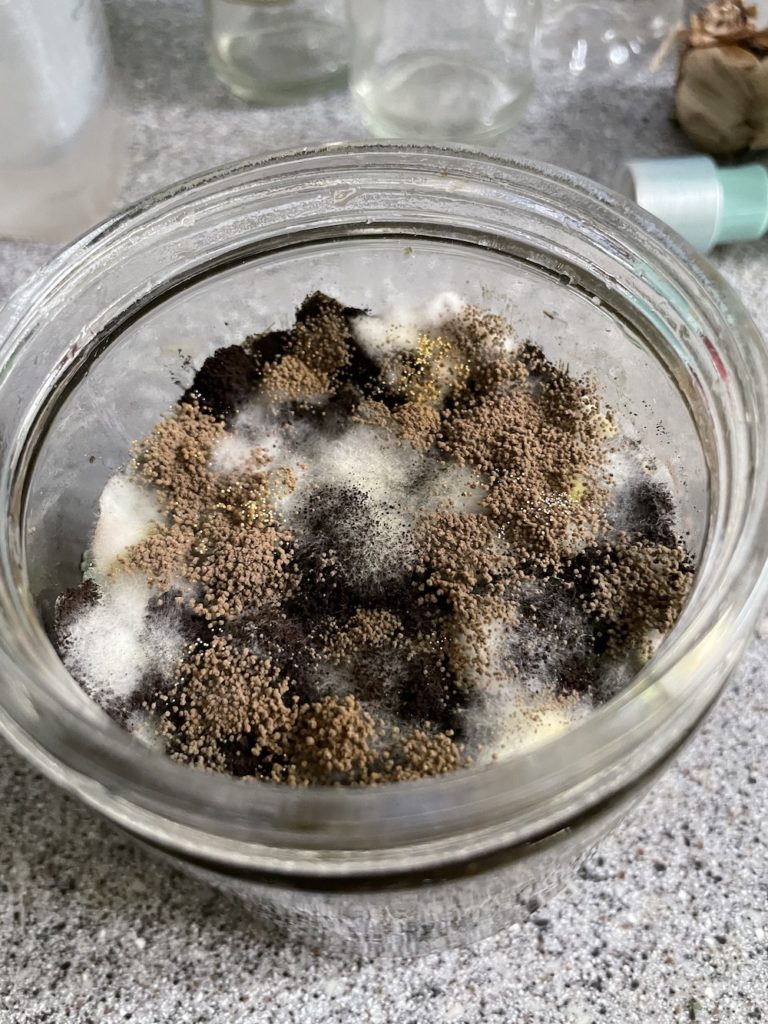
yucky mold on top, but we only keep the liquid on the bottom 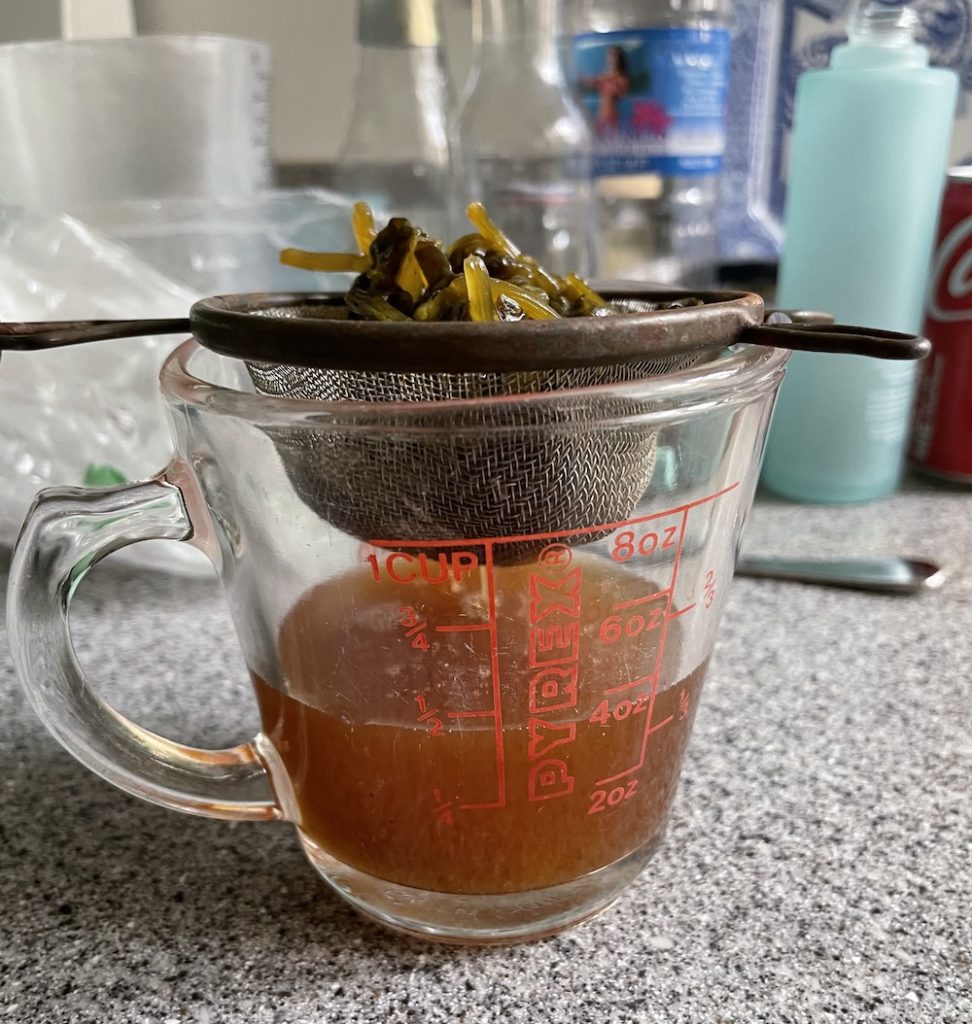
strain but do not sqeeze 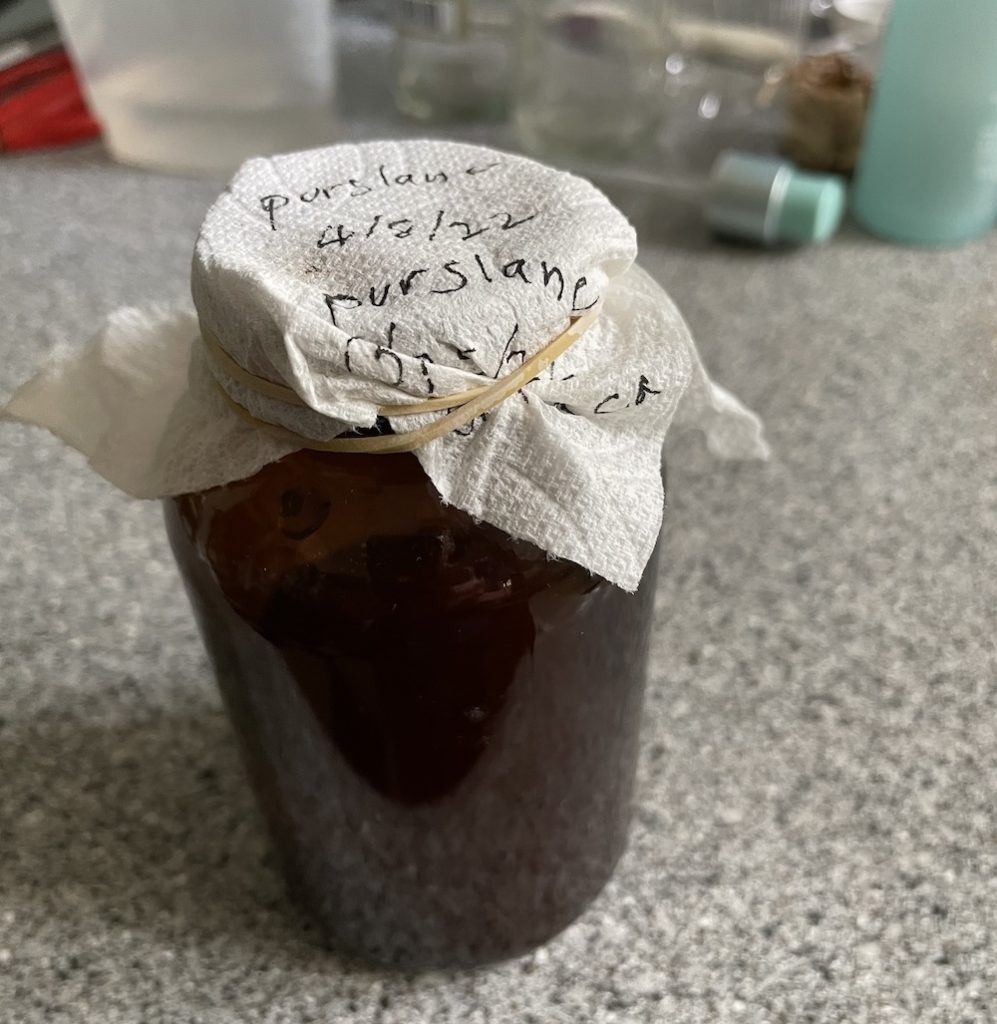
store in a bottle with name, date, and permeable paper towel lid
Here is a really good video of Alika Atay showing how he makes FPJ from purslane (portulaca, pig weed). Good stuff!

Is this a “Korean herbal cure”? Saw it written about on the internet but haven’t had a chance to research yet. It seemed to be a well established Korean cultural teaching & I’m tired of more and more pills
I have watched videos of the experts making the formulas and some of them say that it is very good for our health. I am guessing that the OHN – Oriental Herbal Nutrient – that is one of the ingredients in some of the formulas is very good for us. And FPJ is made with strong plants and we can benefit from them.
I am a believer of natural methods rather than prescription drugs. I need to post one about a Hawaiian weed plant that is great for the respiratory system soon.
Mahalo for your visit!
I agree with Jalna. This is really amazing. You’ll have to show us the results of your hard work some day.
Next one!
Wow, so interesting, Aunty!